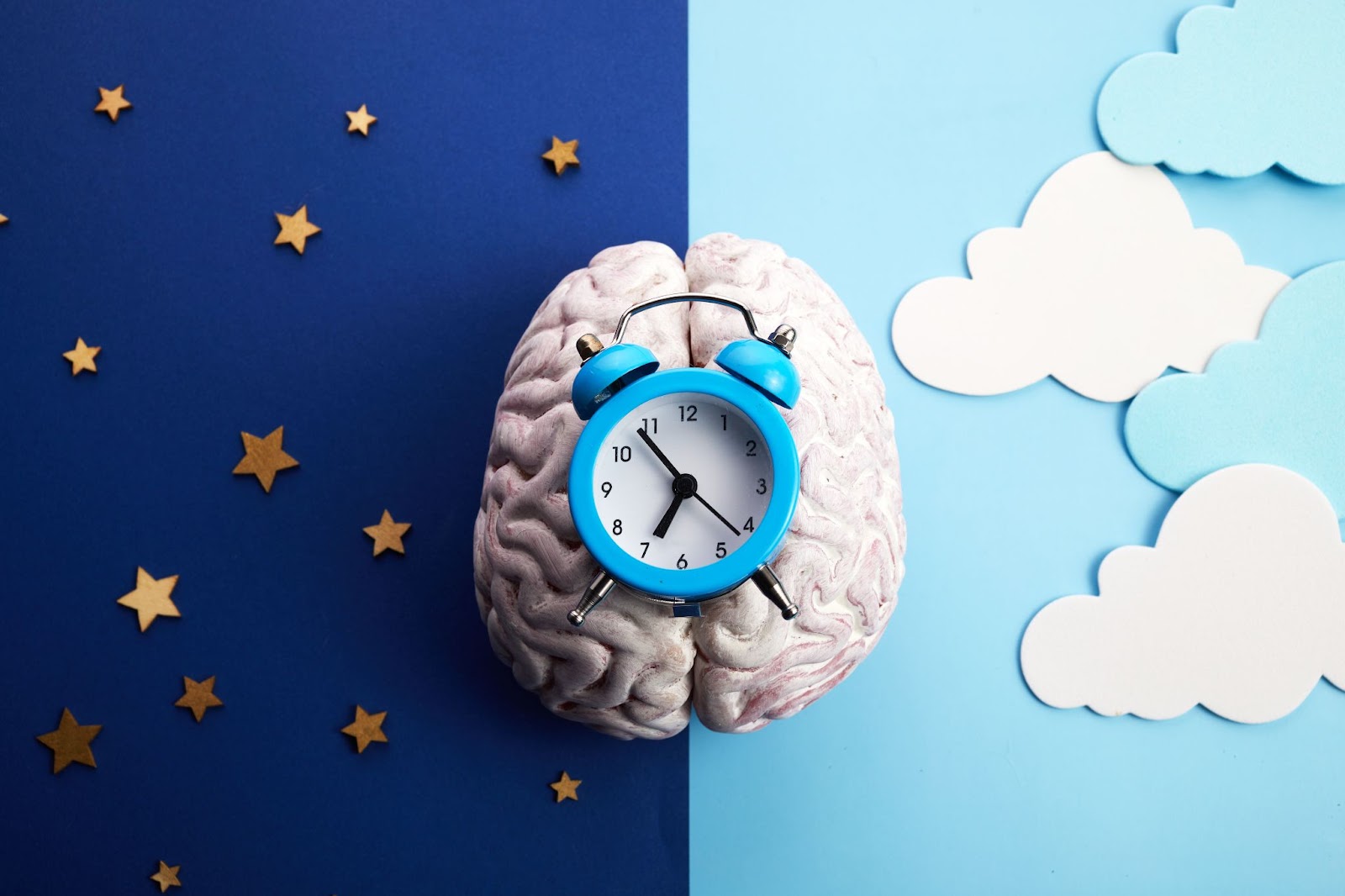Sleep stands as a cornerstone of good health. Yet, many remain unaware of the intricate dance between the two primary stages of sleep: REM (Rapid Eye Movement) and Non-REM. Understanding their nuanced interplay and respective health implications isn’t just academic—it’s crucial for those seeking to improve their sleep quality and overall well-being.
The Sleep Cycle: A Deeper Examination
Every night, as we close our eyes and drift off, our body embarks on an intricate journey that constitutes the sleep cycle. This cycle, lasting on average about 90 minutes, is far from a homogenous period of unconsciousness. Instead, it’s a meticulously orchestrated sequence that involves transitioning between the Non-REM and REM sleep stages.
The fascinating part is that this cycle isn’t a one-time occurrence; rather, it repeats multiple times throughout the night, with each cycle offering varying amounts of REM and Non-REM stages. As the night progresses, the proportion of time spent in REM sleep increases, which might explain why we often wake from dreams in the early morning hours.
But what makes these stages so distinct and significant?
Non-REM Sleep: This phase, further divided into three stages, commences the sleep cycle. The first stage, known as N1, is a light, transitional phase where one shifts from wakefulness to sleep, lasting just a few minutes. Subsequently, the N2 stage sets in, accounting for about 40-60% of our sleep. Here, our heart rate slows, body temperature drops, and we become further detached from our surroundings. But it’s the third stage, N3 or deep sleep, that’s crucial for the body. During this stage, tissue growth and repair occur, vital hormones are released, and energy is restored.
REM Sleep: Often termed as the ‘dreaming phase’, REM sleep is characterized by rapid eye movement, increased brain activity, and temporary muscle paralysis. This stage plays a pivotal role in mood regulation, learning, and memory processing. It’s also when most vivid dreaming happens, courtesy of the heightened brain activity.
The seamless transition between these stages and the balance achieved across the multiple sleep cycles is paramount. An understanding of this intricate interplay is instrumental not just for sleep scientists and clinicians but also for individuals keen on optimizing their sleep quality and reaping its multifaceted health benefits.
It’s not just about the duration of sleep, but also about its quality, structure, and depth. And delving into the intricacies of the sleep cycle illuminates just why achieving a balanced, uninterrupted night of rest is so critical for our overall well-being and cognitive performance.
Navigating the Complex Web of Sleep Stage Influences
The ebb and flow of our sleep patterns aren’t merely spontaneous; they’re governed by a myriad of interrelated factors, both intrinsic and extrinsic. To truly grasp the mechanics of our sleep cycle and achieve better sleep, one must understand these key determinants.
1. Age and Developmental Changes:
As mentioned, age plays a pivotal role in our sleep structure. Infants, with their rapidly developing brains, spend almost half their sleep time in the REM phase, laying down the foundational neural pathways essential for growth and learning. In contrast, adults, having established most of these pathways, allocate only about 20-25% of their sleep to REM. The transition between these percentages isn’t linear—adolescence, for example, sees a unique sleep pattern that often clashes with early school start times, leading to potential sleep deficits.
2. Lifestyle and Dietary Choices:
Beyond the more obvious culprits like caffeine and alcohol, numerous other lifestyle and dietary factors can skew the REM and Non-REM balance. High sugar intake, especially close to bedtime, can disrupt the onset of sleep and its subsequent cycles. Moreover, late-night screen exposure emits blue light, which can delay the secretion of melatonin, the hormone responsible for sleep onset. Physical activity, particularly its timing, can also influence sleep patterns. While regular exercise promotes healthy sleep, vigorous activity close to bedtime might be counterproductive.
3. Health Conditions and Medications:
Sleep architecture can be significantly impacted by various medical conditions. For instance, depression is often linked with early onset REM sleep and reduced deep Non-REM sleep. Sleep apnea, on the other hand, can fragment sleep, leading to micro-awakenings that interrupt the natural progression of sleep stages. Besides conditions, several medications can alter sleep patterns. Some antidepressants, for example, suppress REM sleep, while certain antihypertensives can increase it.
4. Environmental and External Factors:
Our sleep environment itself—a factor often overlooked—plays a part in sleep quality and structure. A room that’s too hot or cold, or plagued by noise disruptions, can hinder the depth and duration of Non-REM sleep. Even altitude can play a role; higher altitudes are associated with decreased REM sleep.
Harnessing Strategies for a Harmonious Sleep Cycle
Navigating the realms of REM and Non-REM sleep with intent requires a strategic approach. Tapping into holistic strategies can help individuals actualize the desired balance and, by extension, better health. Let’s delve deeper into some effective methods:
1. Prioritize Consistency:
Consistency isn’t just about the number of hours; it’s also about the rhythm. Going to bed and waking up at the same time, even on weekends, sets your internal clock, or circadian rhythm, which in turn fosters a more predictable and stable sleep pattern. This regularity reduces sleep latency, the time it takes to fall asleep, and enhances sleep efficiency, the proportion of time spent asleep while in bed.
2. Optimize the Sleep Environment:
The ambiance of your sleep sanctuary matters. Dimming lights an hour before bedtime aids in melatonin production. Opt for blackout curtains to ensure complete darkness or consider sleep masks as an alternative. The temperature is equally crucial; studies suggest that a slightly cooler room (around 65°F or 18°C) is conducive to deep sleep. A silent environment, or one with white noise, can shield against disruptive external sounds.
3. Curb Caffeine and Alcohol:
It’s not just about avoiding caffeine in the evening. Depending on individual metabolism, the stimulatory effects of caffeine can linger for hours. A safer bet is to limit caffeine consumption to the morning. Alcohol, a sedative, might seem like a sleep aid, but it severely disrupts the latter part of the sleep cycle, particularly REM sleep.
4. Embrace Physical Activity:
Regular exercise has multifold benefits for sleep. It deepens sleep, making the Non-REM stages more restorative. However, timing is paramount. While morning or afternoon exercise can bolster nighttime sleep, engaging in vigorous activity too close to bedtime might have the opposite effect due to the increase in body temperature and adrenaline.
5. Mindfulness and Relaxation Techniques:
Stress and overthinking are formidable foes of sleep. Incorporating practices like meditation, deep breathing, and progressive muscle relaxation can calm the mind and prepare the body for rest. These techniques can reduce sleep onset time and lead to a more profound, uninterrupted sleep.
6. Diet and Sleep:
What you eat can affect how you sleep. A balanced diet, rich in magnesium and tryptophan, can promote better sleep. Avoiding heavy meals right before bedtime ensures that digestion doesn’t interfere with your sleep cycle.
Implementing these strategies might require patience and persistence, but the rewards—a balanced sleep cycle and its accompanying health benefits—are worth the effort. Remember, the journey to harmonious sleep is unique to everyone; what works for one might differ for another. It’s all about finding that personal sweet spot and relishing the rejuvenation it brings.
Stay Informed and Empowered
Knowledge of the intricate dynamics of REM and Non-REM sleep can revolutionize one’s approach to rest. By understanding these stages and their health implications, we not only empower ourselves with insight but also pave the way for informed decisions about sleep health. If you find yourself intrigued by the complexity of sleep or in need of sleep solutions, consider exploring the advanced diagnostic and treatment options available at Functional Sleep Medicine.
Adapted from Functional Sleep Medicine provider Dr. Sahil Chopra’s blog at EmpowerSleep.com.




